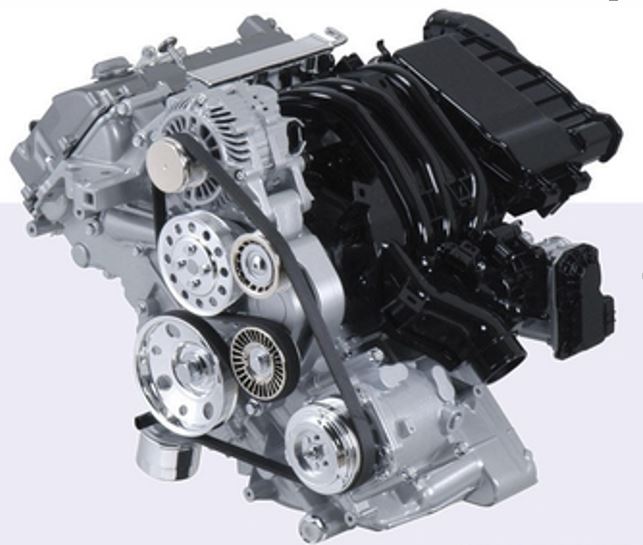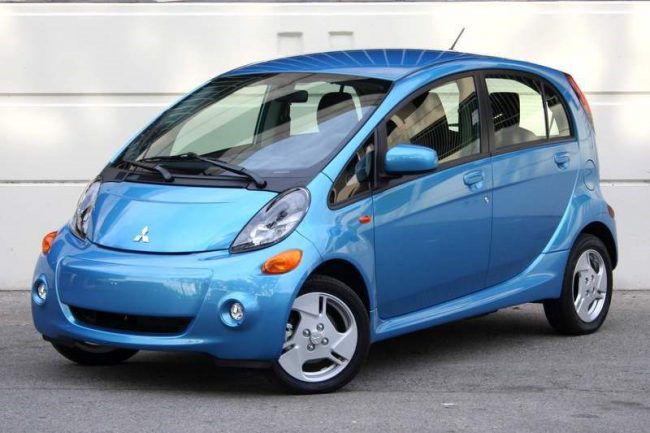
Mitsubishi 3B20 engine
Content
The Mitsubishi 3B20 automobile engine has expanded the family of three-cylinder engines produced for alloy steel kei cars.
In this model of the engine, several innovative technologies were used, which made it possible, while reducing the dimensions of the unit, to increase its power and other technical indicators.
About the history of the birth of the engine
The first such engine was produced in 2005 by the Japanese company Mizushima in Kurashiki, Okayama Prefecture.
The preliminary version of the engine was made earlier - in 2003. It was then that the Smart Idling system (smart idling) was first used, which turns off the engine automatically when the car is stationary. The engine is restarted within 0,2 sec.
With this engine model, the company has proven that it is possible to achieve 3-liter (or a little more) fuel consumption.
For comparison: the very first predecessors of the Mitsubishi 3B20 unit, engines for small cars consumed 2-2,5 times more gasoline.
What is Kei car? The location of the engine in the car
The engine was originally intended for small budget cars of the Kei car class, which were scheduled to be released a year later, in 2006.
Kei-cars, or keijidosha, are light vehicles. Please do not confuse with cars. Namely, small, light. They needed a lighter engine. Therefore, manufacturers have reduced its dimensions (height is 191 mm, length - 286 mm).
The cylinder block and head were cast from aluminum, which made it possible to reduce its weight by 3% compared to its predecessor, the Mitsubishi 8G20 engine. The 3B20 engine is rear-wheel drive, weighs 67 kg.
Mitsubishi 3B20 engine device
The single-row cylinder block and cylinder head (cylinder head) in this ICE line are made of aluminum alloys. The gas distribution mechanism, equipped with two camshafts and 12 valves (4 for each cylinder) is located in the BC head.
The phase shifter uses MIVEC technology. The abbreviation stands for Mitsubishi Innovative Valve timing Electronic Control system, which translates into Russian approximately as follows: an electronic control system for timing (coordination) of the valve mechanism using innovative Mitsubishi technology. MIVEC technology at low speeds:
- Increases combustion stability by reducing internal exhaust gas recirculation;
- Stabilizes combustion through accelerated spray;
- Minimizes friction through low valve lift.
Thus, at low speeds, the difference in valve opening regulates and makes the combustion of the mixture constant, increases the moment of force.
At high speeds, the engine gets the opportunity to breathe in full force, due to the increased time and height of valve lift. The intake of the fuel-air mixture and the exhaust gases are increased. Fuel injection is controlled by the electronic ECI-MULTI system.
In general, all these factors affect the increase in power, reduced fuel consumption and reduced emissions of toxic substances into the atmosphere.
Technical specifications
The engine is available in 2 versions: atmospheric and turbocharged. The great advantage of the Mitsubishi 3B20 engine is its economy.
| Parameters | Atmospheric | turbocharged |
|---|---|---|
| Internal combustion engine volume | 659 cu. cm or 0,66 liters | |
| Power limit | 38 kW (52 hp) at 7000 rpm | 42 kW (57 hp) -48 kW (65 hp) at 6000 rpm |
| Highest torque | 57 Nm at 4000 rpm | 85 -95 Nm at 3000 rpm |
| Fuel consumption | 3,9-5,4L | 3,8-5,6 l |
| Bore | 654,4 mm | |
| Supercharger | No | Turbine |
| Type of fuel | Gasoline AI-92, AI-95 | |
| Number of valves per cylinder | 4 | |
| stroke height | 65,4 mm | |
| Emission of CO 2 | 90-114 g / km | 100-114 g / km |
| Compression ratio | 10,9-12 | 9 |
| ICE type | Inline, 3-cylinder |
The 3B20 engine is installed on the following car models with a hatchback body type:
- Mitsubishi ek Custom
- Mitsubishi eK Space
- Mitsubishi eK-Wagon
- Mitsubishi i
According to the information following from the recall of the owner of the aiki kei car (Mitsubishi i), the engine easily picks up speed of 12 km / h in 80 seconds, and it takes another 10 seconds to reach the “weave”. For the city speed is enough. The small dimensions of the car allow you to "checkerboard" rebuild, stick into traffic jams, which is a very significant plus on city roads.
Another owner of a turbo-powered kei car also notes that a compact car with a Mitsubishi 3B20 engine is the best option for a city road. He reports that fuel consumption in the city is 6-6,5 liters, on the highway - 4-4,5 liters.

